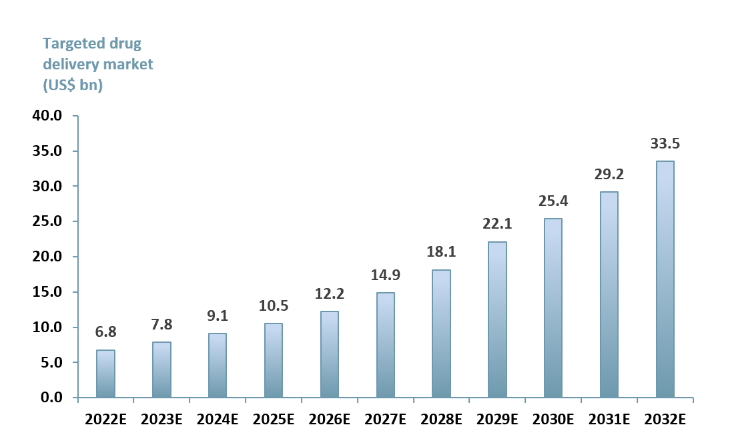Nanoengineers – better than Pharma?
Nanoengineers may be better at drug delivery than pharma and biotech companies. Pneumonia, the inflammation of one or both lungs, is the largest infectious cause of death in children globally. In 2019 it accounted for 14% of all deaths of children under the age of 5, a total of 748,180 (WHO, 2019). This made up 30% of the total global deaths caused by pneumonia, which in 2019 was 2.5m individuals.
Pneumonia is caused by bacteria, viruses and fungi such as:
- Streptococcus pneumoniae – the bacteria that causes the pneumococcal disease and is also found in healthy individuals including children,
- Haemophilus influenzae type b (Hib) – this bacteria that also causes meningitis,
- Respiratory syncytial virus – most common respiratory virus that causes cold-like symptoms,
- Pneumocystis jiroveci – the fungi that causes pneumocystis pneumonia (PCP) and is responsible for 25% of HIV-infected infant deaths.
Pneumonia spreads via viruses and bacteria that are commonly found in the nose or throat and then spreads to the lungs if inhaled. It is also spreads via air-borne droplets from coughing or sneezing. Finally, pneumonia can be spread through the blood – during and after birth. As a result, an individual can get pneumonia from viral infections such as the common cold, flu and now Covid-19.
As pneumonia spreads, it causes the tiny air sacs in the lungs (alveoli) to fill with puss and fluid, which makes it painful to breath and reduces the absorption of oxygen and so the levels of oxygen in the blood.
At present, pneumonia is only treated with oral antibiotics (antimicrobials), primarily amoxicillin. Over the last 20 years, microbial infections have increased significantly, which has either led to the misuse of antibiotics or has been caused by the misuse of antibiotics, probably both.
Antibiotic resistance
When bacteria are frequently exposed to low doses of an antibiotic, while most of the bacteria are killed, those resistant to the drug survive and reproduce resulting in a new antibiotic resistant strain of bacteria.
So far, antibiotic-resistance leads to the death of about 700k individuals annually and it could potentially increase to ~10m deaths annually by 2050E, if antibiotic-resistance continues to rise, as seems very likely. In monetary terms it has been estimated that the cost of antibiotic resistance to the global economy will be about ~US$ 100 trn. (Financial Times, 2020)
Over and incorrect use of antibiotics, such as prescription antibiotics for viruses like the common cold and patients’ failure to complete their antibiotic regimens, are probably the main contributors to antimicrobial-resistance. Infections such as pneumonia, and tuberculosis that were susceptible to antibiotics are becoming immune to these treatments.
Nanoengineering – a hopeful solution
To counteract antibiotic resistance to pneumonia treatments, nanoengineers at the University of California (UC) San Diego have developed a microscopic robot (microrobot) that can swim around the lungs, deliver the medication and clear up pneumonia.
The microrobot – marrying AI + Healthcare
The microrobot was developed by Joseph Wang (world leader in micro and nanorobotics research) and Liangfang Zhang (world leader in cell-mimicking nanoparticles development for the treatment of infections and diseases), both from the School of Engineering at UC San Diego.
Wang and Zhang have pioneered the tiny drug-delivering robot in order to target drug delivery into challenging parts of the body. The microrobot is designed as follows:
- Algae cells with surfaces speckled with antibiotic-filled nanoparticles,
- The algae allows the microrobots to swim around lungs delivering the antibiotics,
- These nanoparticles are made of micro biodegradable polymer spheres enclosed in cell membranes/neutrophils (type of white blood cells),
- These neutrophils absorb and neutralize any inflammatory molecules that are produced by foreign bacteria as well as the immune system,
- This allows the microrobots to decrease any harmful inflammation in the body, therefore making the microrobot effective at fighting lung infections.
The overall goal of the microrobot is targeted drug delivery, especially to areas of the body that are challenging to reach. In their latest study tested on mice, 100% of the mice targeted with microrobots survived past 30 days with the infection fully clearing after one week. Those that did not get the treatment died within three days of being infected.
The treatment with microrobots also proved more effective than IV-infused antibiotics. The IV-infused antibiotic required 3000x the dose of the microrobot, e.g. , a microrobot dose requires 500 nanograms (ng) of antibiotics per mouse where the IV requires 1.644 milligrams (1mg = 1,000,000ng) – the microrobot dose is only 0.03% of the UV dose. Also, with an IV injection, sometimes only a fraction of the dose reaches the lungs.
Wand and Zhang are optimistic that these microrobots would be just as effective in humans and the next steps will be testing in humans. Once the treatment is completed, the body’s immune cells will digest the algae and any remaining nanoparticles. “Nothing toxic is left behind” – Wang.
The global targeted drug delivery market – a place for microrobots?
In exhibit 1 below, we forecast the value of the global targeted drug delivery market using a three-factor growth model. ACF forecasts that the global targeted drug delivery market will reach $32.5bn by 2032E at an overall CAGR of 17.5% over the next 10 years.
Exhibit 1 – Global targeted drug delivery market forecast 2022E-2032E
 Sources: ACF Equity Research Estimates; Globenewswire; MedGadget; Research and Markets.
Sources: ACF Equity Research Estimates; Globenewswire; MedGadget; Research and Markets.
Targeted drug delivery market growth phase 1 CAGR 15.9%:
Our model suggests a phase 1 CAGR of 15.9%, which is based on the market consensus.
So-called ‘targeted drug delivery’, as evidenced by the microrobot, is still in the R&D phase. Therefore, we infer that growth will be lower, and counterintuitively, subject to greater uncertainty in the short-term until products are commercialised and brought to market. Once there are a range of commercialised products growth forecasts are likely to be more predictable.
Targeted drug delivery market growth phase 2 CAGR 21.9%:
It is worth noting that targeted drug delivery via the use of nanoparticles has been used in cancer treatment. In patients with cancer, nanoparticles act as a vehicle to deliver drugs to targeted cancer cells, while avoiding healthy cells. Advanced technology such as the microrobot that uses AI would very likely improve this form of treatment.
Therefore, as we expect microrobots to be deployed for cancer therapies, in phase two of our model for the development of the targeted drug delivery market, we expect further significant investment based on the increasing rate of cancer diagnoses.
According to Cancer Research UK, there will be ~27.5m new cases of cancer each year by 2040E. In 2021, there were an estimated 1.9m new cancer cases globally.
We also see a role for microrobots in the treatment of chronic conditions. For example, the ‘post-Covid pandemic’ (individuals suffering from long covid) appears to be becoming a new chronic condition of high complexity, which we assess will become a market for targeted drug delivery and so microrobots.
Targeted drug delivery market growth phase 3 CAGR 14.9%:
Our CAGR declines to 14.9% as the market begins the first steps towards maturity, competition rises and government funding is exhausted.
Microrobots – will they ever drive enough change to become commonplace?
We expect microrobots to drive change in healthcare. As more sectors within healthcare integrate AI, we expect that microrobots will become commonplace, as is evidenced by the effect of the covid pandemic, which created a ‘new normal’ for healthcare by driving significant aspects of it online. In our assessment, microrobots and nanoengineering have similar potential to drive change in healthcare.




















